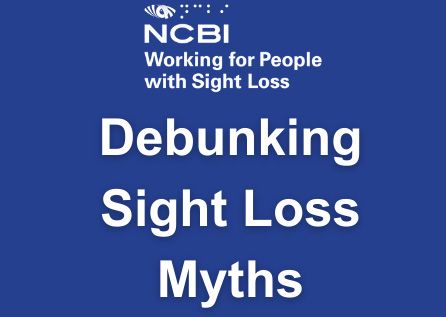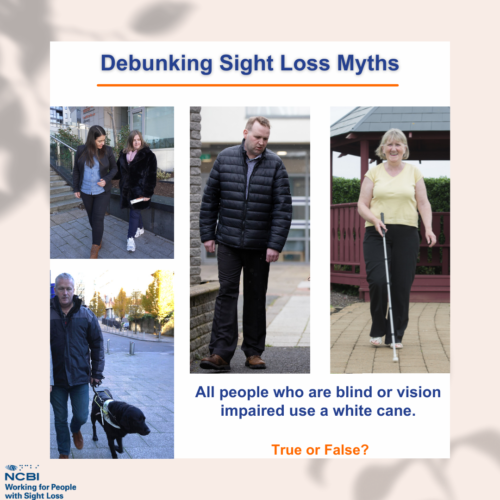

All people who are blind or vision impaired use a white cane. True or false?
Not all people who are blind or vision impaired use white canes to get around, so the above statement is false. The use of a white cane for a person who is blind or vision impaired depends on the preferences or needs of each individual.
One person who is vision impaired may have a sight loss condition that impacts aspects of their sight, but they may still be able to get out and about using their residual vision and without the use of a cane. On the other hand, a different person who is vision impaired may not have enough residual vision to allow them to walk without the use of a cane. The same can be true of someone who is blind. Every person is different – some people may use a guide dog instead of a cane!
Most people who do not have a sight loss condition will be familiar with what is known as a long cane. This cane offers the most protection to the user as it is designed to detect obstacles, level changes or changes in ground texture. The user taps the cane or sweeps it from side to side in front of their body. Training is important to be able to use the long cane successfully.
While this is an important tool for a person who is blind or vision impaired, there are other canes which serve different functions, such as a symbol cane. A symbol cane is used or carried by a person who is blind or vision impaired to notify the general public that the user has a vision impairment and might need assistance. This cane is smaller than other canes and is not used to detect obstacles or level changes in the environment.
There are also support canes available, which, again, serve a different purpose. This cane is generally prescribed by an occupational therapist and it is measured so that the right length is prescribed for a physical impairment. If you have purchased your own then it is important that the support cane is both the correct type for you and the correct height. NCBI provide white support canes which alert members of the public that you have a vision impairment.
These canes all play important roles, but help from other people may be required even if a person is trained and experienced in using a white cane. In situations where a cane user is in an unfamiliar or busy area that may be difficult to navigate safely, they may need a sighted guide. Using this approach, the person with the vision impairment holds on to the sighted person’s arm as they walk along. It is important that this engagement is initiated properly and the process for these interactions was covered in our previous blog. The safe and correct technique for sighted guide can be taught to you and your family or friends by your Community Resource Worker.
If you require more information about the different white canes or orientation and mobility training available to people who are blind or vision impaired, please call 1800 911 250 or you can make a referral on the NCBI website referral page.